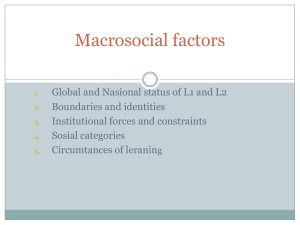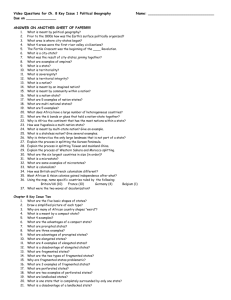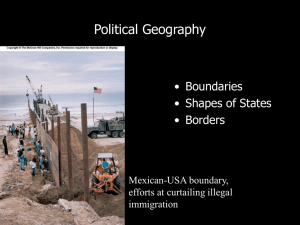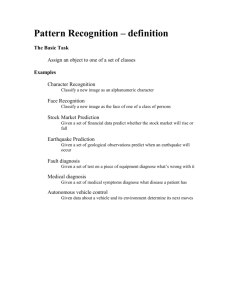In the common sense, the border is the legal line - Hal-SHS
advertisement
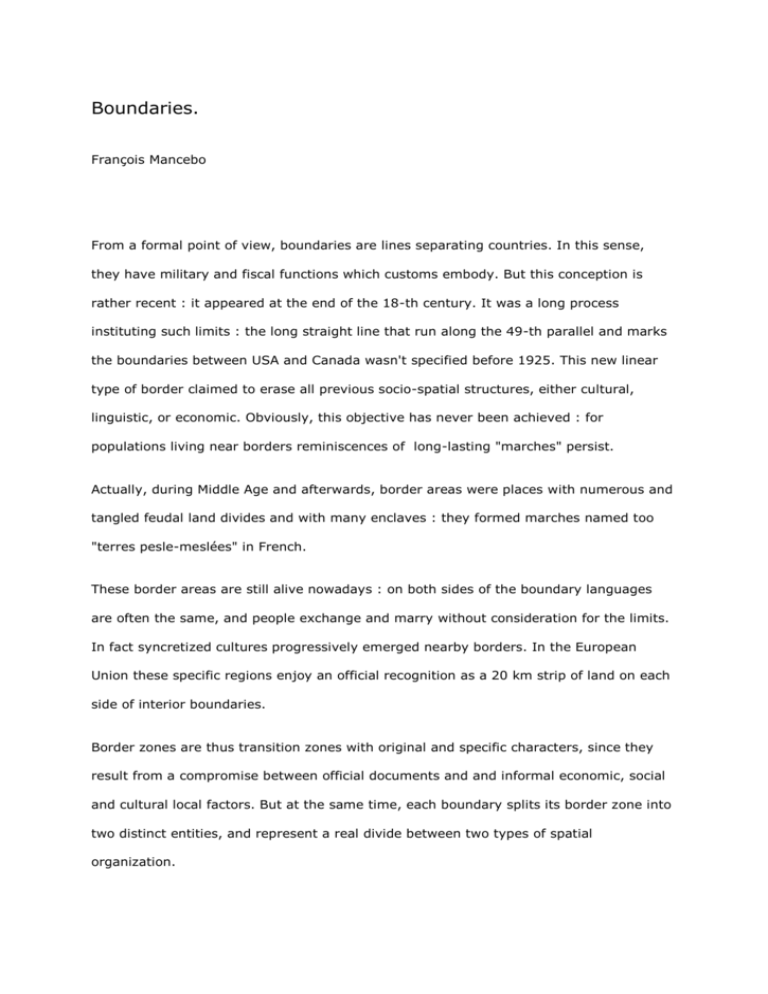
Boundaries. François Mancebo From a formal point of view, boundaries are lines separating countries. In this sense, they have military and fiscal functions which customs embody. But this conception is rather recent : it appeared at the end of the 18-th century. It was a long process instituting such limits : the long straight line that run along the 49-th parallel and marks the boundaries between USA and Canada wasn't specified before 1925. This new linear type of border claimed to erase all previous socio-spatial structures, either cultural, linguistic, or economic. Obviously, this objective has never been achieved : for populations living near borders reminiscences of long-lasting "marches" persist. Actually, during Middle Age and afterwards, border areas were places with numerous and tangled feudal land divides and with many enclaves : they formed marches named too "terres pesle-meslées" in French. These border areas are still alive nowadays : on both sides of the boundary languages are often the same, and people exchange and marry without consideration for the limits. In fact syncretized cultures progressively emerged nearby borders. In the European Union these specific regions enjoy an official recognition as a 20 km strip of land on each side of interior boundaries. Border zones are thus transition zones with original and specific characters, since they result from a compromise between official documents and and informal economic, social and cultural local factors. But at the same time, each boundary splits its border zone into two distinct entities, and represent a real divide between two types of spatial organization. Thus, it would be wrong to consider boundaries as no more than limits between nations. This notion applies as well to any institutional, economic or social, divide between distinct territories. According to Hoover, any physical or legal obstacle that distorts economic and social exchanges can be called a boundary. Nowadays, there is a trend towards the disappearing, or at least the opening, of the boundaries within regional organizations, such as European Union, NAFTO, or ASEAN. But it is highly unlikely that any region in the World will give up a several centuries old history : attitudes, behaviors, manners, suspicions, memories of threatened interests, remain. As a result of which, these border areas never come back to former unitary marches, instead they tend to become specific territories. Furthermore, the opening of a boundary sometimes has pernicious consequences for the border area : some centers are favored to the detriment of others. Boundaries can also separate and distinguish different times likes: pioneer fronts like the American Frontier or the Chinese Great Wall are of that type. Their role is ambivalent and invasive : they are created to impose peace and order, but in fact they are immediately broken and become the basis of new conquests. In such a configuration, the neighbor on the other side of the limit is stigmatized or ignored, what legitimizes the seizure of its territory. Any territory can become —at least partially— a pioneer front, when its culture and organization is denied by an hostile national, infra-national or supra-national structure. All borders thus move relentlessly, even when they are physically marked. Boundaries mobility alter the spatial differentiation of frontier areas. François Mancebo Université Paris 4 Sorbonne Further reading : Hoover E. M. (1948), The location of economic activity, pp. 215-241, New-York : Mac Graw Hill. Mancebo F. (1999), La Cerdagne et ses frontières : conflits et identités transfrontalières, Perpignan : Trabucaïre. Mancebo F. (2001), "Discontinuités, lisières et territoires ; tentative de généralisation de la notion de frontière et de compréhension des dynamiques frontalières", n° 10, pp. 7787, Sud-Ouest Européen, Toulouse : PUM. Mc Lean I., and Butler D. (1995), Fixing the Boundaries, Dartmouth : Aldershot. Raffestin C. (1992), "Autour de la fonction sociale de la frontière", n° 70-71, pp. 157164, Espaces et Sociétés. Sahlins P. (1986), Between France and Spain : Boundaries of territory and identity in a Pyrenean valley, Cerdanya, 2 volumes, Princeton University Press.

